Concept beats Chow Ang Moh by 1000%! Chinese Global Navigation System will work better in so many ways coupled with 5G mobile and Sonar & guides submarine & torpedoes under ocean! You capable of copying or not?
http://www.xinhuanet.com/tech/2019-05/22/c_1210140969.htm
我国今年还将发射6-8颗北斗三号卫星
2019-05-22 18:11:13 来源: 新华网

关注新华网
微信
微博
Qzone
0
评论
新华社北京5月22日电(李国利、张文科)记者从22日在北京召开的第十届中国卫星导航年会上获悉,我国今年还将发射6-8颗北斗三号卫星,继续加快全球组网步伐。
中国卫星导航系统管理办公室主任冉承其在会上透露:“我国今年还将发射6-8颗北斗三号卫星,明年计划再发射2-4颗北斗三号卫星,至2020年底全面完成北斗三号系统建设。”
冉承其表示,届时,北斗系统将在进一步提升全球导航定位授时性能和区域短报文通信服务能力的基础上,实现全球短报文通信、国际搜救,以及覆盖中国和周边地区的星基增强和精密单点定位服务能力。
北斗系统是我国自主建设、独立运行的全球卫星导航系统。截至目前,北斗系统在轨卫星共38颗,包括18颗北斗二号卫星和20颗北斗三号卫星,共同为全球用户提供服务。
据了解,2009年,北斗三号工程正式启动。从2017年11月5日至2018年11月19日的1年间,我国完成19颗北斗三号卫星的超高密度发射,创造了北斗组网发射历史上高密度、高功率的新纪录。2018年12月27日,北斗三号基本系统完成建设并开始提供全球服务,标志着北斗系统提前两年迈入全球时代。
“目前,工程建设进展顺利。”北斗卫星导航系统总设计师杨长风说,预计到2035年,中国还将建设更加泛在、更加融合、更加智能的国家综合定位导航授时(PNT)体系,为全球用户提供更优质的服务。
杨长风进一步解释说,我国PNT体系将以北斗系统为核心,构建与低轨增强系统强耦合,与5G、无线网、惯导紧耦合,并融入长波导航、水声导航、脉冲星导航的综合PNT系统架构。
Here got video!
http://www.xinhuanet.com/politics/2019-05/22/c_1124528189.htm
记者蹲点手记:在这里,探寻中国雷达人的精神世界
2019-05-22 15:00:48 来源: 新华网

关注新华网
微信
微博
Qzone
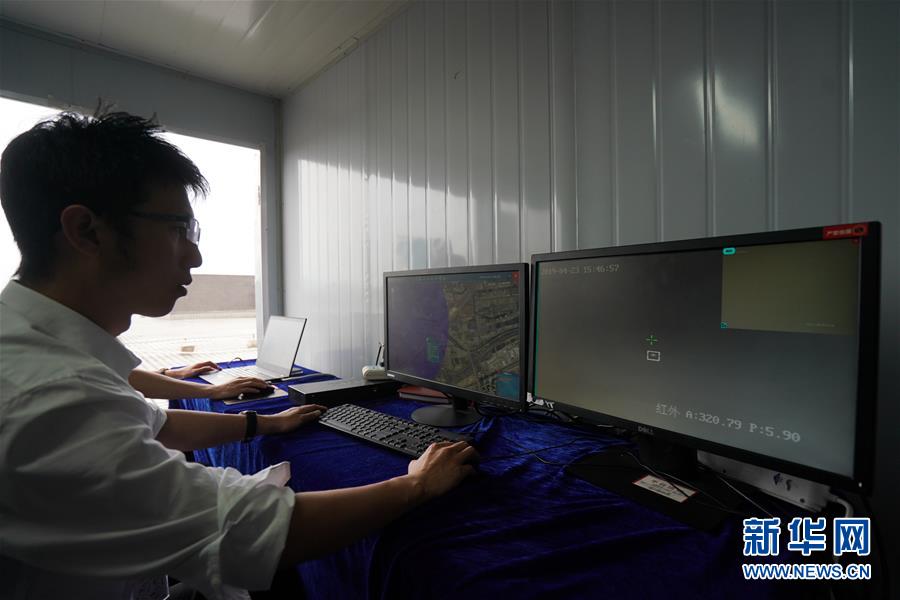 在位于南京的中国电科第14研究所,科研人员在利用“蜘蛛网反无人机系统”捕捉无人机踪迹(4月23日摄)。 新华社记者季春鹏摄
在位于南京的中国电科第14研究所,科研人员在利用“蜘蛛网反无人机系统”捕捉无人机踪迹(4月23日摄)。 新华社记者季春鹏摄
新华社南京5月22日电 题:记者蹲点手记:在这里,探寻中国雷达人的精神世界
新华社记者胡喆、王珏玢、刘宇轩
70年,能做什么?一个人也许庸碌地过完了一生,一群雷达工业的先行者,却硬是把一个只能靠“捡”雷达用的行业,打造成了一张响当当的中国名片。
立“军令状”为战机造出“争气雷达”、研制预警机“警眼”、托起“神舟”飞天的测控重任……无数个“高光”时刻,记录了一代代雷达人前行的足迹。
在中国雷达发源地、中国电科14所采访的一周里,一个问题始终在记者心头萦绕:是什么力量促使他们克服万难,绝不放弃?
20世纪50年代,一大批老科学家带着雷达上前线,为我国“雷达第一营”打下坚实的装备和人才基础。60年代中期,上千名雷达专家毫无怨言地迁居三线山区,创建十多家研究所、工厂。
在食不饱腹的条件下,老一辈设计师通宵达旦,手绘上千张图纸。有的30多岁就英年早逝,有的忙于研究而无暇照顾子女,只能将孩子送往乡下,长期分离。“争气雷达”创始人张光义、贲德,头一次同机试飞就遇险,但没有人被吓退。老院士贲德说:“只要完成研制任务,付出什么都行!”
为有牺牲多壮志。在第一代雷达人心中,雷达精神或许是这种不顾一切的拼劲儿。
从零基础到硕果累累,“中华神盾”和预警机雷达两个项目组,都遇到了相似的技术跨越挑战。不同的研究团队,选择了相似的攻关路:一个带着百十个“防吐袋”扎根舰艇,晕船了出来吐,吐完接着干;一个全员住在测试室,二十四小时轮班分析故障。预警机雷达负责人张良说:“就像军人守阵地,研制节点就是我的‘阵地’,守不住是失职。”
在第二代雷达人心里,雷达精神或许就是像守阵地般做科研。
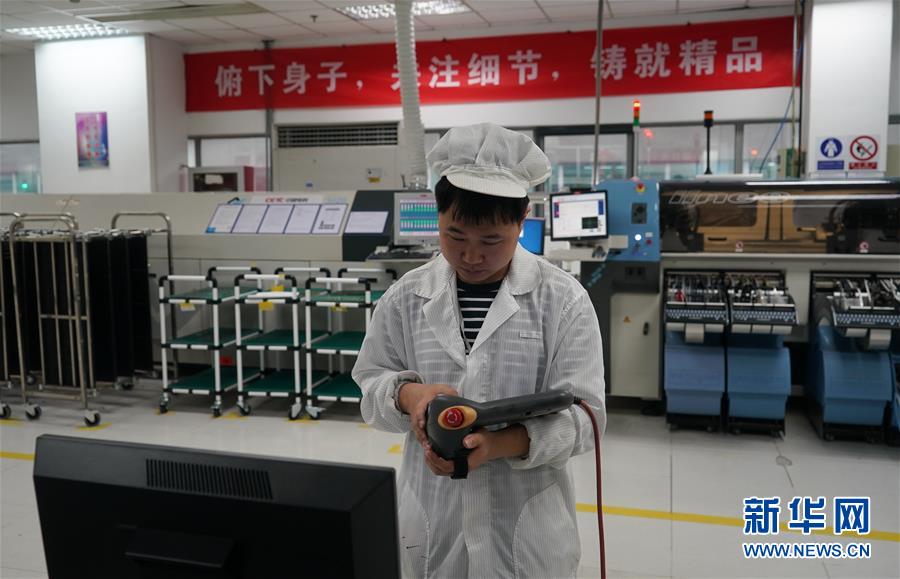 在位于南京的中国电科第14研究所,微电子智能制造车间的工作人员在作业(4月22日摄)。 新华社记者季春鹏摄
在位于南京的中国电科第14研究所,微电子智能制造车间的工作人员在作业(4月22日摄)。 新华社记者季春鹏摄
太赫兹雷达、微波光子雷达、量子雷达……很难想象,参与研发这些高精尖产品的,是一群平均年龄只有33岁的博士毕业生。
14所所长胡明春坦言:“把他们请来,我们可是打过预防针的,要能吃苦、出长差、不比工资高低。”
这样的单位吸引力何在?清华博士毕业生夏凌浩说,对年轻人委以重担,从不轻视每一个“奇思怪想”,在这里,年轻人真正能各展所长,大显身手。
少年自有凌云志。在一大批年轻人眼里,敢想敢干、改写未来,或许正是新时代的雷达精神。
不同时代,雷达人的探索之路各不相同,但雷达精神却代代铭记、薪火相传。
一代代雷达人秉持爱国奉献、永不放弃的初心,写下壮丽的时代奋斗答卷。

图集
http://www.xinhuanet.com/politics/2019-05/22/c_1124528117.htm
铸就“大国之眼”——来自中国雷达工业发源地中国电科第14研究所的蹲点报告
2019-05-22 14:44:57 来源: 新华网

关注新华网
微信
微博
Qzone
新华社记者刘亢、王珏玢、胡喆、刘宇轩
70年前,一座2层小楼、几台机床,见证了新中国雷达工业的蹒跚起步;70年后,一座现代化研究所矗立在长江之畔,从这里诞生的雷达产品,享誉世界。
从修配仿制到自力更生,从保障“两弹一星”到为“神舟”飞天护航,这个与共和国同龄的研究所,目睹了中国雷达从无到有,由弱向强。
这里是中国雷达工业发源地——中国电子科技集团有限公司第14研究所。在这里,三代雷达人前赴后继,谱出一曲科研报国的壮歌。
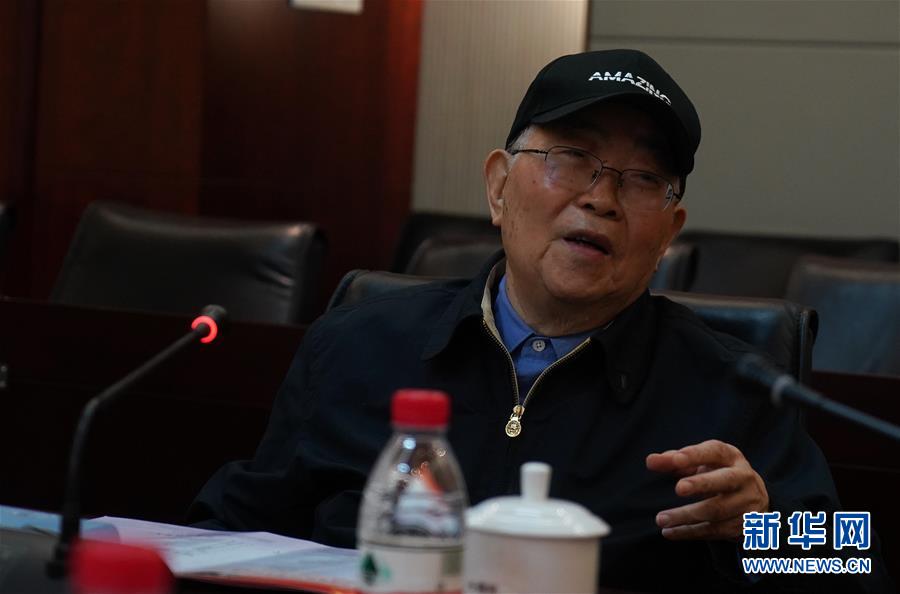 在位于南京的中国电科第14研究所,中国工程院院士、雷达专家张光义在介绍相控阵雷达及其发展趋势(4月23日摄)。 新华社记者季春鹏摄
在位于南京的中国电科第14研究所,中国工程院院士、雷达专家张光义在介绍相控阵雷达及其发展趋势(4月23日摄)。 新华社记者季春鹏摄
从落后追赶到局部领先:中国雷达的奋起之路
俯瞰大地、探索海洋、追梦太空,人类认知自然的每一次跨越,都离不开雷达的身影。
1949年4月24日,中国雷达工业在南京城北一座2层“小红楼”里起步。100多名职工、三四台机床、几部从敌方缴获的雷达,是当时中国雷达工业起步的全部家底。
技术落后,就会挨打。今年84岁的中国工程院院士张光义,至今对那段憋屈的历史耿耿于怀:解放初期,新中国只能“捡”别人的雷达用,很多武器甚至没有雷达。“被炮弹打中,还不知是谁打的。”
早在二战期间,英军已能用雷达对德空中拦截,守护英国本土不致沦陷。战后不久,国际上成功用雷达测出地月距离。但一直到上世纪80年代,我国的战斗机雷达还停留在只能测测距离、能看天看不了地的阶段。专家判断,“中国雷达和国外起码相差30年!”
夜幕中的“小红楼”,目睹了一代代雷达人的不眠不休。无数技术鸿沟,硬是靠拆雷达、分析、仿造,一点点追了上来。
上世纪50年代,我国自行设计出第一部314甲中程警戒雷达,标志着我国迈出自主设计雷达的重要一步;
70年代,7010大型相控阵远程战略预警雷达屹立于燕山余脉黄羊山上,中国人从此掌握了相控阵雷达尖端技术;
进入21世纪,中国雷达发展更驶入了“快车道”:
2007年,国产预警机空警2000雷达如期研制完成。这部具有里程碑意义的“警眼”雷达,让我国从零基础一跃而上、实现隔代跨越。
2017年4月,我国第二艘航母下水,它的“舰眼”是“中华神盾”雷达。有了它,拥有300万平方公里海洋国土、1.8万公里海岸线的中国,离走向深蓝的梦想又迈进一大步。
2019年3月,我国长征系列运载火箭的发射次数正式刷新为“300”。“神舟”飞天、“北斗”组网、“嫦娥”探月,中国实现了用全自主研发的雷达测控保障,一路为追梦太空护航。
而今,中国雷达已在陆、海、空、天四大领域,实现对电磁信息的感知、处理、使用和反馈。
“经过数十年坚持不懈的努力,当前中国雷达技术已经与世界先进水平比肩,并在局部领域处于领先地位。”中国工程院院士吴曼青说。
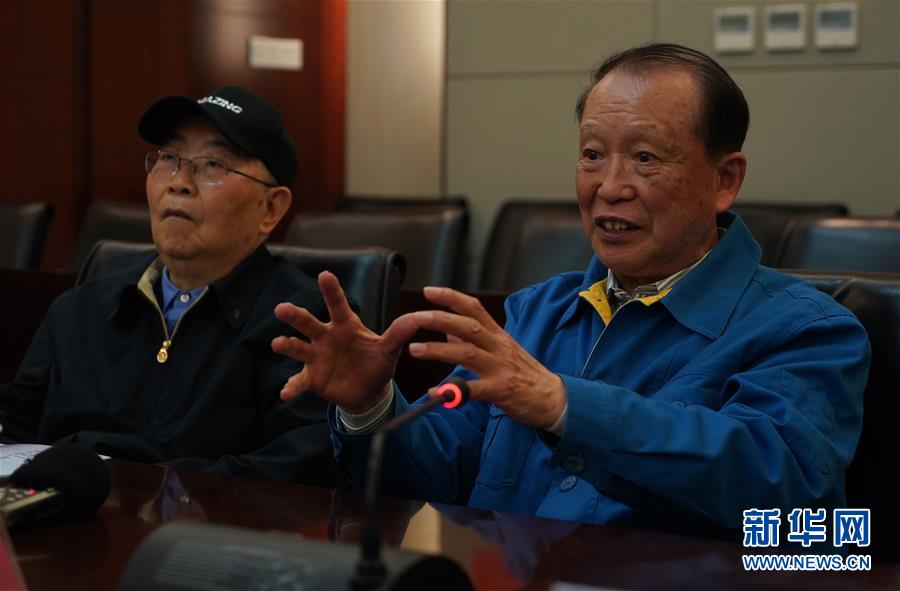 在位于南京的中国电科第14研究所,中国工程院院士、雷达专家贲德(右)在介绍机载火控雷达及其发展趋势(4月23日摄)。 新华社记者季春鹏摄
在位于南京的中国电科第14研究所,中国工程院院士、雷达专家贲德(右)在介绍机载火控雷达及其发展趋势(4月23日摄)。 新华社记者季春鹏摄
能钻研、肯奉献:他们是雷达工业的“老母鸡”
在行业内,14所被亲切地称为雷达工业的“老母鸡”。
1956年起,上千名14所员工举家迁居三线山区,在条件极其艰苦的环境中继续开拓雷达事业,先后包建、援建16家雷达厂、研究所,为雷达工业发展作出了卓越贡献。
14所内部,能钻研、肯奉献、挑得起重担的雷达人故事,总被一代代新人反复传颂:
国之所需,吾心所系。中国雷达创始人申仲义,生生练就一套“看”雷达“绝技”。新中国成立之初缺产品、缺图纸,每次出国他就到处看雷达,回国后立刻回忆画图纸,组织大家研究、设计。在中国雷达的起步阶段,许多雷达产品就这样一点一点被“看”出来。
一句承诺,一生报国。62岁入党的雷达先辈张直中,在宣誓时说:“我要把62岁当作26岁去工作,把一切献给党。”从修配到仿制、从自行设计到保障“两弹一星”,直至暮年,张直中都在践行对祖国的承诺,奋斗在雷达技术的最前沿。
为国科研,万死不辞。“拼命三郎”贲德,面对西方国家的封锁困境立下军令状:研制战斗机雷达,让中国部队用上自己的“争气机”!1年多的试飞期,贲德两次遇险。发动机停转、起落架失灵,都没有把这个文弱书生吓走:“任务逼人!只要能做出雷达,献出什么都行!”
“先辈们的事迹,让‘奋斗’‘奉献’不再是空泛的字眼,而成了活生生的人和事。”年轻研究员陈栋说,在雷达研制团队里,有两条“潜”规则:一是团队唯技术不唯权威,鼓励年轻人说话。即使刚工作的“小菜鸟”,也能直接向权威挑战。二是老同志必须毫无保留培养新人、绝不藏私,出现难题也总是“老人”在一线带新人一起干。也正因此,年轻人总能站在前辈的肩膀上快速成长。
老带新,靠言传,更靠身教。参与“中华神盾”项目的一批年轻技术人员,至今对研制中的惊险波折记忆犹新:2003年初,历经万难造出的雷达一上舰却差点被判“死刑”:在陆地上好好的机器,到了波涛滚滚的海面上却无法识别海浪反射出的千万个假信号,完全无法工作。
一些人断定,“中华神盾”到此为止了。科研团队憋着一口气,由负责人带队,直接住到了海边。从此,人员轮班,机器不歇。海上联试,他们带100个塑料袋挂满栏杆,晕船了出去吐,吐完回来接着干。2005年,“中华神盾”如期研制成功。而就在交付当年,总设计师张亚朋被确诊癌症晚期,半年后不幸逝世。
“在这样的团队里成长,我毫不怀疑,一代代雷达青年会续写自己的传奇!”陈栋说。
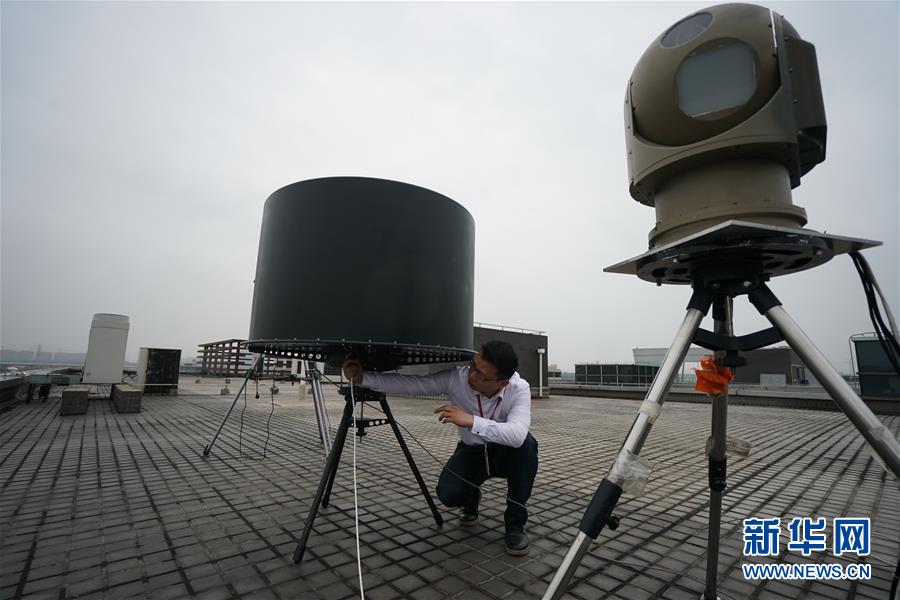 在位于南京的中国电科第14研究所,科研人员在调试“蜘蛛网反无人机系统”(4月23日摄)。 新华社记者季春鹏摄
在位于南京的中国电科第14研究所,科研人员在调试“蜘蛛网反无人机系统”(4月23日摄)。 新华社记者季春鹏摄
“没有愿不愿意,任务必须完成”
蹲点期间,记者最常听到的一句话是:“没有愿不愿意,任务必须完成。”从战斗机“鹰眼”到“中华神盾”雷达,再到预警机“警眼”,无数攻关都在技术积累为零的恶劣条件下立“军令状”完成。
14所人身上,除了科技工作者共性的严谨,总有些独特的“气质”,让他们“不太一样”。
这气质是接得起“军令状”的胆识。“项目真难,我也犹豫过。但国家真把任务下达,就得顶得上去。” “中华神盾”主要负责人之一邢文革碰到的这种“临危受命”,在14所还有很多。他说,“不挑活”,是雷达人的老传统。
这气质是不退一步的信念。空警2000预警机雷达总设计师张良说:“研制节点就是我的‘阵地’,守不住是失职!”
这气质是光荣与愧疚间的抉择。参加“神一”到“神五”发射的多目标测量雷达负责人杨文军,为了雷达研制,在孩子出生后的10个月里,总计回家不足30天。他自称是个“不称职的父亲、不负责任的丈夫”,唯一值得一说的,是“还算个负责勤奋的科研人”。
年轻的女设计师仇芝,在基地一住好几个月,年幼的儿子开始总问“妈妈,妈妈,你明天回来吗?”到后来变成“妈妈,你明年回家吗?”
雷达人自比戈壁滩上的骆驼刺。这种植物高不过半米,却把根扎向十几米深的地下,硬是在荒凉的沙漠里活出一片生机。
“前辈们不留退路、破釜沉舟,今天,我们给年轻人更大、更好的平台,让他们干在别处干不成的事。”在14所一扎35年的所长胡明春,带领全所深化改革,激发研发活力。
如今,一套重视成长、宽容失败的新体制已经建立:对于学习期内的新人,给予薪资保护,让人才无后顾之忧;提出研发创意得到部门认可的,研究失败不担责任,一旦成功给予重奖。
“给力”的政策,让14所成为新时代的“创造营”。承担多项高精尖技术研发的14所智能感知实验室,平均年龄仅33岁,其中绝大多数是来自清华、北大、中科大等院校的博士毕业生。
如今,从14所发源的中国雷达工业展翅腾飞,又在攀登新的高峰——
新亮相的中国量子雷达样机,突破同类雷达探测极限;防空警戒雷达在空中编织出一张国土防空情报网,舰载雷达、警戒雷达、机载火控雷达技术不断突破;
还有为川航英雄航班传递“生命代码”的空管雷达、摸得清天象的“问天一号”、抓得了“黑飞”无人机的“蜘蛛网”……全新的国产雷达系统,正从各个方面为国家的建设与发展保驾护航。
“真没想到,现在的中国雷达能这么多、这么好。”老院士张光义说,年轻一代已经接棒,中国雷达,未来更可期!

铸就“大国之眼”——来自中国雷达工业发源地中国电科第14研究所的蹲点报告
2019-05-22 14:44:57 来源: 新华网
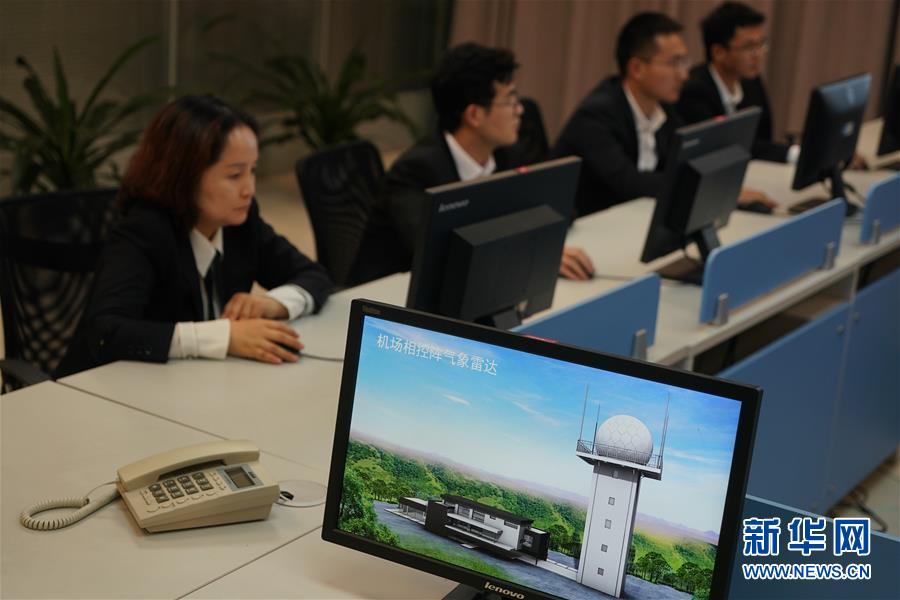 在位于南京的中国电科第14研究所,科研人员在进行智能制造数字化协同仿真设计(4月22日摄)。 新华社记者季春鹏摄
在位于南京的中国电科第14研究所,科研人员在进行智能制造数字化协同仿真设计(4月22日摄)。 新华社记者季春鹏摄
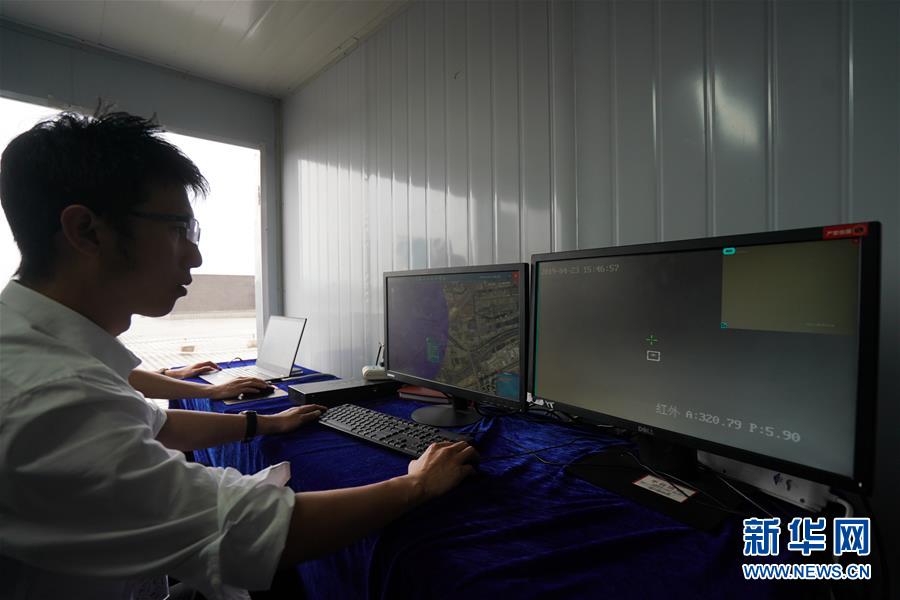
在位于南京的中国电科第14研究所,科研人员在利用“蜘蛛网反无人机系统”捕捉无人机踪迹(4月23日摄)。 新华社记者季春鹏摄
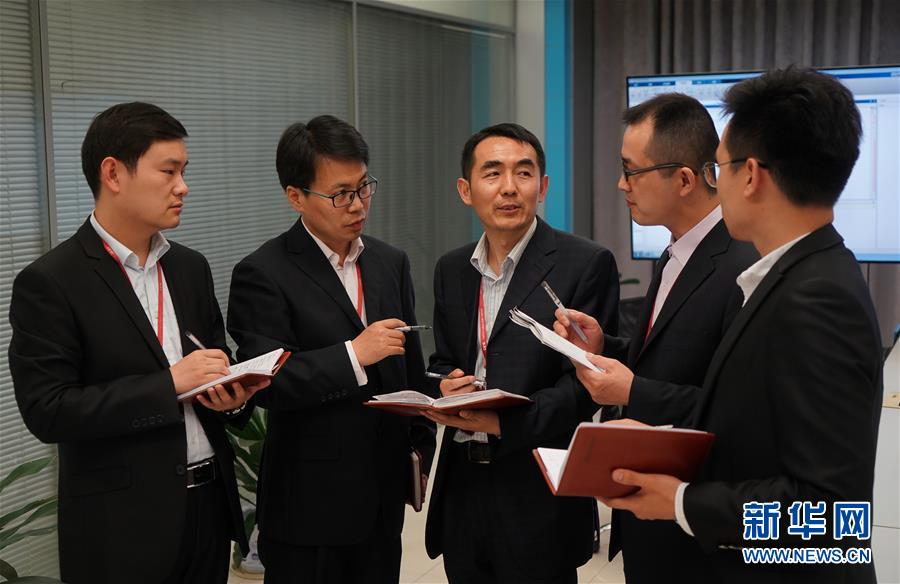
在位于南京的中国电科第14研究所,“海之星”雷达科研团队部分成员在进行课题研讨(4月22日摄)。 新华社记者季春鹏摄
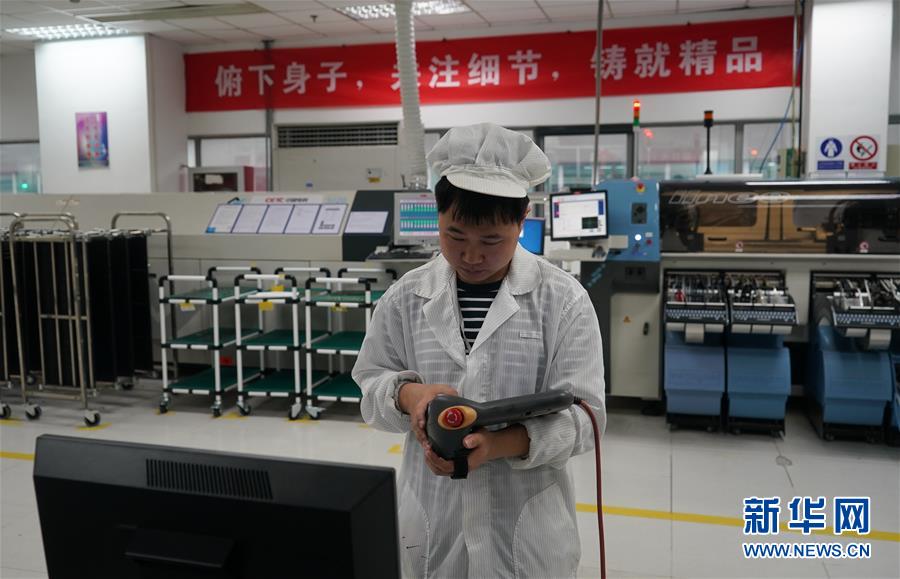
在位于南京的中国电科第14研究所,微电子智能制造车间的工作人员在作业(4月22日摄)。 新华社记者季春鹏摄
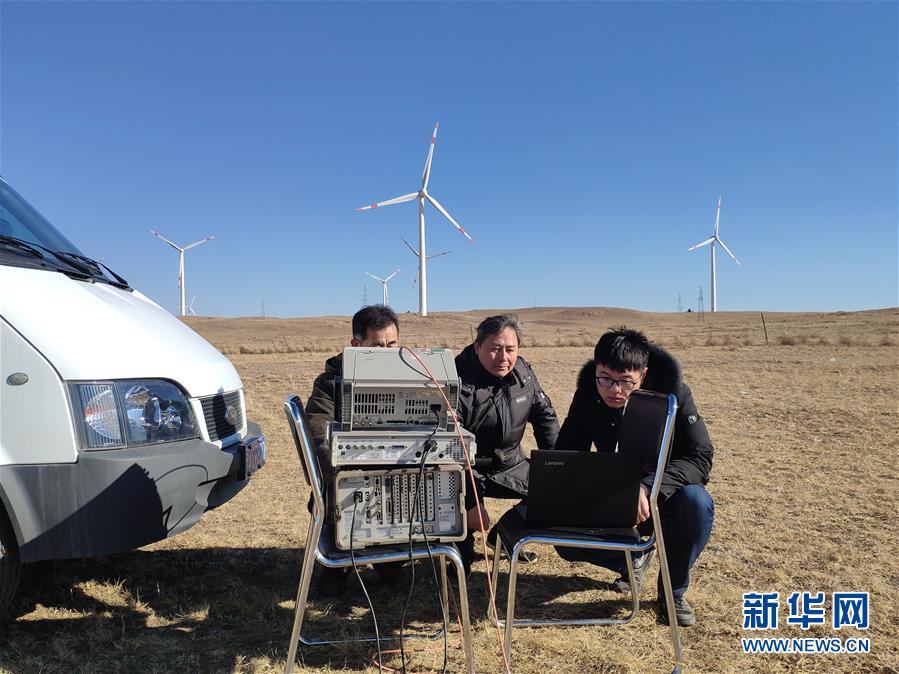
在内蒙古希拉穆仁草原上,中国电科第14研究所某雷达团队在开展电磁环境测试(3月23日摄)。 新华社发(中国电科第14研究所供图)
Http://www.xinhuanet.com/tech/2019-05/22/c_1210140969.htm
China will also launch 6-8 Beidou-3 satellites this year.
2019-05-22 18:11:13 Source: Xinhuanet
Pay attention to Xinhuanet
WeChat
Weibo
Qzone
0
comment
Xinhua News Agency, Beijing, May 22 (Li Guoli, Zhang Wenke) The reporter learned from the 10th China Satellite Navigation Annual Conference held in Beijing on the 22nd that China will launch 6-8 Beidou-3 satellites this year and continue to accelerate the world. Networking pace.
Qi Chengqi, director of the China Satellite Navigation System Management Office, revealed at the meeting: "China will launch 6-8 Beidou-3 satellites this year, and plans to launch another 2-4 Beidou-3 satellites next year. By the end of 2020, the Beidou 3 system will be fully completed. Construction."
Qi Cheng said that by then, Beidou system will realize global short message communication, international search and rescue, and coverage of China and surrounding areas based on further enhancement of global navigation and positioning performance and regional short message communication service capabilities. Single point location service capability.
The Beidou system is a global satellite navigation system built and operated independently by China. Up to now, the Beidou system has a total of 38 satellites in orbit, including 18 Beidou-2 satellites and 20 Beidou-3 satellites, which together serve the global users.
It is understood that in 2009, the Beidou No. 3 project was officially launched. During the one-year period from November 5, 2017 to November 19, 2018, China completed the ultra-high-density launch of 19 Beidou-3 satellites, creating a new record of high density and high power in the history of the Beidou network. On December 27, 2018, the basic system of the Beidou No. 3 was completed and began to provide global services, marking the Beidou system entering the global era two years ahead of schedule.
“At present, the project construction is progressing smoothly.” Yang Changfeng, chief designer of Beidou satellite navigation system, said that by 2035, China is expected to build a more ubiquitous, more integrated and smarter national integrated positioning and navigation time (PNT) system for the world. Users provide better service.
Yang Changfeng further explained that China's PNT system will be based on the Beidou system, and build a strong PNT that is strongly coupled with the low-track augmentation system, tightly coupled with 5G, wireless networks, and inertial navigation, and integrated into long-wave navigation, underwater acoustic navigation, and pulsar navigation. system structure.
Here got video!
Http://www.xinhuanet.com/politics/2019-05/22/c_1124528189.htm
Reporter's note: Here, explore the spiritual world of Chinese radar people
2019-05-22 15:00:48 Source: Xinhuanet
Pay attention to Xinhuanet
WeChat
Weibo
Qzone
(Xinhua All-Media Headlines, Magnificent 70 Years, Struggle for a New Era, Graphic and Interactive) (4) Casting the "Eye of the Great Powers" - A Report from the 14th Research Institute of China Electric Power Industry, the birthplace of China's radar industry
At the 14th Research Institute of China Electronics Division in Nanjing, researchers used the "Spider Network Anti-UAV System" to capture the drone trail (photo taken on April 23). Xinhua News Agency reporter Ji Chunpeng photo
Xinhua News Agency, Nanjing, May 22nd: Question: Reporter's note: Here, explore the spiritual world of Chinese radar people
Xinhua News Agency reporter Hu Wei, Wang Wei, Liu Yuxuan
70 years, what can I do? A person may have lived through his life in a mediocre way. A group of pioneers in the radar industry has made it a Chinese business card that can only rely on the "捡" radar.
Establishing a "military order" for the warplanes to create "gas-gravity radar", the development of early-warning aircraft "police eyes", holding up the "Shenzhou" flying control and control ... ... countless "high light" moments, recording the footprint of a generation of radar people.
In the week of China's radar birthplace and China Electronics Division 14 interviews, a question has always been lingering in the hearts of reporters: What forces are driving them to overcome all difficulties and never give up?
In the 1950s, a large number of old scientists took the radar to the front line and laid a solid foundation for equipment and talent for China's "radar first battalion." In the mid-1960s, thousands of radar experts moved to the third-line mountainous areas without complaint, creating more than ten research institutes and factories.
Under the conditions of not eating enough, the older generation of designers are all day long and hand-painted thousands of drawings. Some people in their 30s died young, some were busy studying and innocently taking care of their children. They could only send their children to the countryside and separated for a long time. Zhang Guangyi and Jude, the founders of "Jiqi Radar", were in distress on the first flight test, but no one was scared off. The old academician Jude said: "As long as you complete the development task, you can do whatever you want!"
For the sacrifice of more ambitions. In the hearts of the first generation of radar people, the radar spirit may be such a desperate effort.
From zero basis to fruitful results, the two projects of "China Aegis" and AWACS radar have encountered similar technical challenges. Different research teams chose a similar approach: a ship with a dozen "anti-pocket bags", seasicked out and spit, spit and then dry; a full member lives in the test room, 24-hour shift analysis malfunction. Zhang Liang, the person in charge of the early warning aircraft radar, said: "Like the military guarding the position, the development of the node is my 'position', and it is a failure to keep the job."
In the second generation of radar people, the radar spirit may be doing research like a guardian.
(Xinhua All-Media Headlines, Magnificent 70 Years, Struggle in a New Era, Graphic and Interactive) (7) Casting the "Eye of the Great Powers" - A Report from the 14th Research Institute of China Electric Power Industry, the birthplace of China's radar industry
At the 14th Research Institute of China Electronics Division in Nanjing, the staff of the microelectronics intelligent manufacturing workshop is working (photo taken on April 22). Xinhua News Agency reporter Ji Chunpeng photo
Terahertz radar, microwave photon radar, quantum radar... It is hard to imagine that a group of doctoral graduates with an average age of only 33 years old are involved in the development of these highly sophisticated products.
Hu Mingchun, the director of the 14th Institute, said frankly: "If you invite them, we have already taken vaccinations. We must be able to suffer hardships, grow poor, and not be higher than wages."
What is the attraction of such a unit? Xia Linghao, a graduate of Tsinghua University, said that he has to shoulder the burden of young people and never underestimate every "singularity and whimsy". Here, young people can really show their strengths and show their talents.
The teenager has his own Lingyun. In the eyes of a large number of young people, dare to dare to do and rewrite the future may be the radar spirit of the new era.
In different eras, the radar people's way of exploration is different, but the radar spirit is remembered by generations and passed on from generation to generation.
Generations of radar people uphold the patriotic dedication, never give up the initial heart, write down the magnificent era struggles.
Casting the "eye of a big country" - a report from the 14th Institute of China Electric Power, the birthplace of China's radar industry
Atlas
Http://www.xinhuanet.com/politics/2019-05/22/c_1124528117.htm
Casting the "eye of a big country" - a report from the 14th Institute of China Electric Power, the birthplace of China's radar industry
2019-05-22 14:44:57 Source: Xinhuanet
Pay attention to Xinhuanet
WeChat
Weibo
Qzone
Xinhua News Agency, Nanjing, May 22nd Issue: Casting the "Eye of the Great Powers" - Report from the 14th Institute of China Electric Power, the birthplace of China's radar industry
Xinhua News Agency reporter Liu Wei, Wang Wei, Hu Wei, Liu Yuxuan
70 years ago, a two-story building and several machine tools witnessed the start of the new Chinese radar industry. Seventy years later, a modern research institute stood on the banks of the Yangtze River. The radar products born from here are world-famous.
From repairing imitation to self-reliance, from guaranteeing "two bombs and one star" to escorting the "Shenzhou", this institute of the same age as the Republic has witnessed the Chinese radar from scratch, from weak to strong.
This is the 14th Institute of China Electronics Technology Group Co., Ltd., the birthplace of China's radar industry. Here, three generations of radar people went on and on, and produced a strong song of scientific research.
(Xinhua all-industry headlines · magnificent 70 years · struggle new era · graphic interaction) (1) cast "the eyes of the big country" - from the 14th Institute of China Electric Power Industry, the birthplace of China's radar industry
Zhang Guangyi, an academician of the Chinese Academy of Engineering and a radar expert at the 14th Research Institute of China Electric Power Research Institute in Nanjing, introduced the phased array radar and its development trend (photo taken on April 23). Xinhua News Agency reporter Ji Chunpeng photo
Chasing from backward to partial lead: the road to rise of Chinese radar
Overlooking the earth, exploring the ocean, and chasing the space of dreams, every step of human cognition of nature is inseparable from the radar.
On April 24, 1949, the Chinese radar industry started in a two-storey "Little Red House" in the north of Nanjing. More than 100 employees, three or four machine tools, and several radars seized from the enemy were all the starting points of the Chinese radar industry.
If the technology is backward, it will be beaten. Zhang Guangyi, an 84-year-old academician of the Chinese Academy of Engineering, has so far cherished the history of that grievance: in the early days of liberation, the new China could only "smash" other people's radars, and many weapons did not even have radar. "I was hit by a cannonball. I don't know who hit it."
As early as during World War II, the British army had been able to intercept the German air by radar, and to protect the British mainland from falling. Shortly after the war, the internationally successfully used radar to measure the distance between the Earth and the Moon. However, until the 1980s, China’s fighter radars were still at a stage where they could only measure distances and see the sky. Experts judged that "China's radar and foreign countries are at least 30 years apart!"
The "Little Red House" in the night saw the sleeplessness of a generation of radar people. Numerous technological divides are hard to chase up by radar, analysis, and counterfeiting.
In the 1950s, China designed its first 314 A medium-range warning radar, marking an important step for China to design its own radar.
In the 1970s, the 7010 large phased array long-range strategic early warning radar stood on the Huangshan Mountain in the Yanshan Mountains. The Chinese have mastered the cutting-edge technology of phased array radar.
In the 21st century, China's radar development has entered the "fast lane":
In 2007, the domestic early warning aircraft air police 2000 radar was completed as scheduled. This landmark "police eye" radar allows China to leap from zero basis and achieve intergenerational leapfrogging.
In April 2017, China’s second carrier was launched, and its “ship” was the “China Aegis” radar. With it, China, with 3 million square kilometers of marine land and 18,000 kilometers of coastline, has taken another big step toward the dream of going deep blue.
In March 2019, the number of launches of China’s Long March series of launch vehicles was officially refreshed to “300”. "Shenzhou" flying, "Beidou" network, "嫦娥" to explore the moon, China has achieved the use of fully independent research and development of radar measurement and control support, all the way to chase the dream space escort.
Today, China's radar has realized the perception, processing, use and feedback of electromagnetic information in the four fields of land, sea, air and sky.
"After decades of unremitting efforts, China's current radar technology has already stood shoulder to shoulder with the world's advanced level and is in a leading position in some areas," said Wu Manqing, an academician of the Chinese Academy of Engineering.
(Xinhua All-Star Headlines, Magnificent 70 Years, Struggle in a New Era, Graphic and Interactive) (2) Casting the "Eye of a Great Power" - A Report from the 14th Research Institute of China Electric Power Industry, the birthplace of China's radar industry
At the 14th Research Institute of China Electric Power Research Institute in Nanjing, the Chinese Academy of Engineering academician and radar expert Jude (right) introduced the airborne fire control radar and its development trend (photo taken on April 23). Xinhua News Agency reporter Ji Chunpeng photo
Can delve into, dedication: they are the "old hen" of the radar industry
In the industry, 14 are affectionately known as the "old hens" of the radar industry.
Since 1956, thousands of 14 employees have moved to the third-line mountainous areas, and continue to develop radar business in extremely difficult conditions. They have built and built 16 radar factories and research institutes, which have made outstanding contributions to the development of the radar industry. .
Inside the 14th, the story of radar people who can delve into, contribute, and pick up the burden, has been repeatedly told by generations of new generations:
The needs of the country, my heart. Shen Zhongyi, the founder of China Radar, has a set of "seeing" radar "stunts". At the beginning of the founding of New China, it lacked products and lacked drawings. Every time he went abroad, he looked around at the radar. After returning home, he immediately recalled the drawings and organized research and design. In the initial stage of China's radar, many radar products were "seeing" little by little.
A promise to pay for the country. Zhang Zhizhong, a 62-year-old radar ancestor who joined the party, said in an oath: "I want to treat 62-year-old as 26-year-old to work and give everything to the party." From repairing to imitation, from self-design to guaranteeing "two bombs and one star", Until the following year, Zhang Zhizhong was practicing his commitment to the motherland and struggling at the forefront of radar technology.
For the country's scientific research, there is no death. "Desperately Saburo" Jude, in the face of the Western countries' blockade predicament set a military order: the development of fighter radar, let the Chinese troops use their own "gas machine"! During the test flight period of more than one year, Jude was in distress. The engine stalled and the landing gear failed, and the article was scared away: "The mission is compelling! As long as you can make a radar, don't give anything!"
"The ancestors' deeds, let 'fighting' and 'dedication' are no longer empty words, and become a living person and thing." Young researcher Chen Dong said that in the radar development team, there are two "dive" rules: First, the team is not only technical, but also encourages young people to speak. Even the "small rookie" who just worked can directly challenge the authority. Second, the old comrades must cultivate new people without reservations, never hide their own secrets, and the problems are always "old people" to bring new people together in the first line. For this reason, young people can always stand on the shoulders of their predecessors and grow fast.
Old and new, relying on words, more on the body. A group of young technicians who participated in the "China Aegis" project have still remembered the thrilling developments in the development. At the beginning of 2003, the radar that was built by the hardships was almost sentenced to "death penalty": good on land. The machine, when it arrived at the rolling sea, could not recognize the thousands of false signals reflected by the waves and could not work at all.
Some people have concluded that "China Aegis" has ended here. The research team took a sigh of relief and was led by the person in charge and lived directly to the beach. Since then, the personnel have been working shifts and the machines are not resting. At the sea joint test, they took 100 plastic bags and covered them with railings. They got out of the sea with seasickness and spit out and then dried up. In 2005, "China Aegis" was successfully developed as scheduled. In the year of delivery, the chief designer Zhang Yapeng was diagnosed with advanced cancer and died unfortunately half a year later.
"Growing up in such a team, I have no doubt that generations of radar youth will continue to write their own legends!" Chen Dong said.
(Xinhua All-Star Headlines, Magnificent 70 Years, Struggle for a New Era, Graphic and Interactive) (6) Casting the "Eye of the Great Powers" - A Report from the 14th Research Institute of China Electric Power Industry, the birthplace of China's radar industry
At the 14th Research Institute of China Electronics Division in Nanjing, researchers are debugging the "Spider Network Anti-UAV System" (photo taken on April 23). Xinhua News Agency reporter Ji Chunpeng photo
"No willing or not, the task must be completed"
During the squatting period, the most frequently heard sentence of the reporter was: "No wish, no will, mission must
http://www.xinhuanet.com/tech/2019-05/22/c_1210140969.htm
我国今年还将发射6-8颗北斗三号卫星
2019-05-22 18:11:13 来源: 新华网

关注新华网
微信
微博
Qzone
0
评论
新华社北京5月22日电(李国利、张文科)记者从22日在北京召开的第十届中国卫星导航年会上获悉,我国今年还将发射6-8颗北斗三号卫星,继续加快全球组网步伐。
中国卫星导航系统管理办公室主任冉承其在会上透露:“我国今年还将发射6-8颗北斗三号卫星,明年计划再发射2-4颗北斗三号卫星,至2020年底全面完成北斗三号系统建设。”
冉承其表示,届时,北斗系统将在进一步提升全球导航定位授时性能和区域短报文通信服务能力的基础上,实现全球短报文通信、国际搜救,以及覆盖中国和周边地区的星基增强和精密单点定位服务能力。
北斗系统是我国自主建设、独立运行的全球卫星导航系统。截至目前,北斗系统在轨卫星共38颗,包括18颗北斗二号卫星和20颗北斗三号卫星,共同为全球用户提供服务。
据了解,2009年,北斗三号工程正式启动。从2017年11月5日至2018年11月19日的1年间,我国完成19颗北斗三号卫星的超高密度发射,创造了北斗组网发射历史上高密度、高功率的新纪录。2018年12月27日,北斗三号基本系统完成建设并开始提供全球服务,标志着北斗系统提前两年迈入全球时代。
“目前,工程建设进展顺利。”北斗卫星导航系统总设计师杨长风说,预计到2035年,中国还将建设更加泛在、更加融合、更加智能的国家综合定位导航授时(PNT)体系,为全球用户提供更优质的服务。
杨长风进一步解释说,我国PNT体系将以北斗系统为核心,构建与低轨增强系统强耦合,与5G、无线网、惯导紧耦合,并融入长波导航、水声导航、脉冲星导航的综合PNT系统架构。
Here got video!
http://www.xinhuanet.com/politics/2019-05/22/c_1124528189.htm
记者蹲点手记:在这里,探寻中国雷达人的精神世界
2019-05-22 15:00:48 来源: 新华网

关注新华网
微信
微博
Qzone

新华社南京5月22日电 题:记者蹲点手记:在这里,探寻中国雷达人的精神世界
新华社记者胡喆、王珏玢、刘宇轩
70年,能做什么?一个人也许庸碌地过完了一生,一群雷达工业的先行者,却硬是把一个只能靠“捡”雷达用的行业,打造成了一张响当当的中国名片。
立“军令状”为战机造出“争气雷达”、研制预警机“警眼”、托起“神舟”飞天的测控重任……无数个“高光”时刻,记录了一代代雷达人前行的足迹。
在中国雷达发源地、中国电科14所采访的一周里,一个问题始终在记者心头萦绕:是什么力量促使他们克服万难,绝不放弃?
20世纪50年代,一大批老科学家带着雷达上前线,为我国“雷达第一营”打下坚实的装备和人才基础。60年代中期,上千名雷达专家毫无怨言地迁居三线山区,创建十多家研究所、工厂。
在食不饱腹的条件下,老一辈设计师通宵达旦,手绘上千张图纸。有的30多岁就英年早逝,有的忙于研究而无暇照顾子女,只能将孩子送往乡下,长期分离。“争气雷达”创始人张光义、贲德,头一次同机试飞就遇险,但没有人被吓退。老院士贲德说:“只要完成研制任务,付出什么都行!”
为有牺牲多壮志。在第一代雷达人心中,雷达精神或许是这种不顾一切的拼劲儿。
从零基础到硕果累累,“中华神盾”和预警机雷达两个项目组,都遇到了相似的技术跨越挑战。不同的研究团队,选择了相似的攻关路:一个带着百十个“防吐袋”扎根舰艇,晕船了出来吐,吐完接着干;一个全员住在测试室,二十四小时轮班分析故障。预警机雷达负责人张良说:“就像军人守阵地,研制节点就是我的‘阵地’,守不住是失职。”
在第二代雷达人心里,雷达精神或许就是像守阵地般做科研。

太赫兹雷达、微波光子雷达、量子雷达……很难想象,参与研发这些高精尖产品的,是一群平均年龄只有33岁的博士毕业生。
14所所长胡明春坦言:“把他们请来,我们可是打过预防针的,要能吃苦、出长差、不比工资高低。”
这样的单位吸引力何在?清华博士毕业生夏凌浩说,对年轻人委以重担,从不轻视每一个“奇思怪想”,在这里,年轻人真正能各展所长,大显身手。
少年自有凌云志。在一大批年轻人眼里,敢想敢干、改写未来,或许正是新时代的雷达精神。
不同时代,雷达人的探索之路各不相同,但雷达精神却代代铭记、薪火相传。
一代代雷达人秉持爱国奉献、永不放弃的初心,写下壮丽的时代奋斗答卷。

图集
http://www.xinhuanet.com/politics/2019-05/22/c_1124528117.htm
铸就“大国之眼”——来自中国雷达工业发源地中国电科第14研究所的蹲点报告
2019-05-22 14:44:57 来源: 新华网

关注新华网
微信
微博
Qzone
新华社南京5月22日电 题:铸就“大国之眼”——来自中国雷达工业发源地中国电科第14研究所的蹲点报告新华社记者刘亢、王珏玢、胡喆、刘宇轩
70年前,一座2层小楼、几台机床,见证了新中国雷达工业的蹒跚起步;70年后,一座现代化研究所矗立在长江之畔,从这里诞生的雷达产品,享誉世界。
从修配仿制到自力更生,从保障“两弹一星”到为“神舟”飞天护航,这个与共和国同龄的研究所,目睹了中国雷达从无到有,由弱向强。
这里是中国雷达工业发源地——中国电子科技集团有限公司第14研究所。在这里,三代雷达人前赴后继,谱出一曲科研报国的壮歌。

从落后追赶到局部领先:中国雷达的奋起之路
俯瞰大地、探索海洋、追梦太空,人类认知自然的每一次跨越,都离不开雷达的身影。
1949年4月24日,中国雷达工业在南京城北一座2层“小红楼”里起步。100多名职工、三四台机床、几部从敌方缴获的雷达,是当时中国雷达工业起步的全部家底。
技术落后,就会挨打。今年84岁的中国工程院院士张光义,至今对那段憋屈的历史耿耿于怀:解放初期,新中国只能“捡”别人的雷达用,很多武器甚至没有雷达。“被炮弹打中,还不知是谁打的。”
早在二战期间,英军已能用雷达对德空中拦截,守护英国本土不致沦陷。战后不久,国际上成功用雷达测出地月距离。但一直到上世纪80年代,我国的战斗机雷达还停留在只能测测距离、能看天看不了地的阶段。专家判断,“中国雷达和国外起码相差30年!”
夜幕中的“小红楼”,目睹了一代代雷达人的不眠不休。无数技术鸿沟,硬是靠拆雷达、分析、仿造,一点点追了上来。
上世纪50年代,我国自行设计出第一部314甲中程警戒雷达,标志着我国迈出自主设计雷达的重要一步;
70年代,7010大型相控阵远程战略预警雷达屹立于燕山余脉黄羊山上,中国人从此掌握了相控阵雷达尖端技术;
进入21世纪,中国雷达发展更驶入了“快车道”:
2007年,国产预警机空警2000雷达如期研制完成。这部具有里程碑意义的“警眼”雷达,让我国从零基础一跃而上、实现隔代跨越。
2017年4月,我国第二艘航母下水,它的“舰眼”是“中华神盾”雷达。有了它,拥有300万平方公里海洋国土、1.8万公里海岸线的中国,离走向深蓝的梦想又迈进一大步。
2019年3月,我国长征系列运载火箭的发射次数正式刷新为“300”。“神舟”飞天、“北斗”组网、“嫦娥”探月,中国实现了用全自主研发的雷达测控保障,一路为追梦太空护航。
而今,中国雷达已在陆、海、空、天四大领域,实现对电磁信息的感知、处理、使用和反馈。
“经过数十年坚持不懈的努力,当前中国雷达技术已经与世界先进水平比肩,并在局部领域处于领先地位。”中国工程院院士吴曼青说。

能钻研、肯奉献:他们是雷达工业的“老母鸡”
在行业内,14所被亲切地称为雷达工业的“老母鸡”。
1956年起,上千名14所员工举家迁居三线山区,在条件极其艰苦的环境中继续开拓雷达事业,先后包建、援建16家雷达厂、研究所,为雷达工业发展作出了卓越贡献。
14所内部,能钻研、肯奉献、挑得起重担的雷达人故事,总被一代代新人反复传颂:
国之所需,吾心所系。中国雷达创始人申仲义,生生练就一套“看”雷达“绝技”。新中国成立之初缺产品、缺图纸,每次出国他就到处看雷达,回国后立刻回忆画图纸,组织大家研究、设计。在中国雷达的起步阶段,许多雷达产品就这样一点一点被“看”出来。
一句承诺,一生报国。62岁入党的雷达先辈张直中,在宣誓时说:“我要把62岁当作26岁去工作,把一切献给党。”从修配到仿制、从自行设计到保障“两弹一星”,直至暮年,张直中都在践行对祖国的承诺,奋斗在雷达技术的最前沿。
为国科研,万死不辞。“拼命三郎”贲德,面对西方国家的封锁困境立下军令状:研制战斗机雷达,让中国部队用上自己的“争气机”!1年多的试飞期,贲德两次遇险。发动机停转、起落架失灵,都没有把这个文弱书生吓走:“任务逼人!只要能做出雷达,献出什么都行!”
“先辈们的事迹,让‘奋斗’‘奉献’不再是空泛的字眼,而成了活生生的人和事。”年轻研究员陈栋说,在雷达研制团队里,有两条“潜”规则:一是团队唯技术不唯权威,鼓励年轻人说话。即使刚工作的“小菜鸟”,也能直接向权威挑战。二是老同志必须毫无保留培养新人、绝不藏私,出现难题也总是“老人”在一线带新人一起干。也正因此,年轻人总能站在前辈的肩膀上快速成长。
老带新,靠言传,更靠身教。参与“中华神盾”项目的一批年轻技术人员,至今对研制中的惊险波折记忆犹新:2003年初,历经万难造出的雷达一上舰却差点被判“死刑”:在陆地上好好的机器,到了波涛滚滚的海面上却无法识别海浪反射出的千万个假信号,完全无法工作。
一些人断定,“中华神盾”到此为止了。科研团队憋着一口气,由负责人带队,直接住到了海边。从此,人员轮班,机器不歇。海上联试,他们带100个塑料袋挂满栏杆,晕船了出去吐,吐完回来接着干。2005年,“中华神盾”如期研制成功。而就在交付当年,总设计师张亚朋被确诊癌症晚期,半年后不幸逝世。
“在这样的团队里成长,我毫不怀疑,一代代雷达青年会续写自己的传奇!”陈栋说。

“没有愿不愿意,任务必须完成”
蹲点期间,记者最常听到的一句话是:“没有愿不愿意,任务必须完成。”从战斗机“鹰眼”到“中华神盾”雷达,再到预警机“警眼”,无数攻关都在技术积累为零的恶劣条件下立“军令状”完成。
14所人身上,除了科技工作者共性的严谨,总有些独特的“气质”,让他们“不太一样”。
这气质是接得起“军令状”的胆识。“项目真难,我也犹豫过。但国家真把任务下达,就得顶得上去。” “中华神盾”主要负责人之一邢文革碰到的这种“临危受命”,在14所还有很多。他说,“不挑活”,是雷达人的老传统。
这气质是不退一步的信念。空警2000预警机雷达总设计师张良说:“研制节点就是我的‘阵地’,守不住是失职!”
这气质是光荣与愧疚间的抉择。参加“神一”到“神五”发射的多目标测量雷达负责人杨文军,为了雷达研制,在孩子出生后的10个月里,总计回家不足30天。他自称是个“不称职的父亲、不负责任的丈夫”,唯一值得一说的,是“还算个负责勤奋的科研人”。
年轻的女设计师仇芝,在基地一住好几个月,年幼的儿子开始总问“妈妈,妈妈,你明天回来吗?”到后来变成“妈妈,你明年回家吗?”
雷达人自比戈壁滩上的骆驼刺。这种植物高不过半米,却把根扎向十几米深的地下,硬是在荒凉的沙漠里活出一片生机。
“前辈们不留退路、破釜沉舟,今天,我们给年轻人更大、更好的平台,让他们干在别处干不成的事。”在14所一扎35年的所长胡明春,带领全所深化改革,激发研发活力。
如今,一套重视成长、宽容失败的新体制已经建立:对于学习期内的新人,给予薪资保护,让人才无后顾之忧;提出研发创意得到部门认可的,研究失败不担责任,一旦成功给予重奖。
“给力”的政策,让14所成为新时代的“创造营”。承担多项高精尖技术研发的14所智能感知实验室,平均年龄仅33岁,其中绝大多数是来自清华、北大、中科大等院校的博士毕业生。
如今,从14所发源的中国雷达工业展翅腾飞,又在攀登新的高峰——
新亮相的中国量子雷达样机,突破同类雷达探测极限;防空警戒雷达在空中编织出一张国土防空情报网,舰载雷达、警戒雷达、机载火控雷达技术不断突破;
还有为川航英雄航班传递“生命代码”的空管雷达、摸得清天象的“问天一号”、抓得了“黑飞”无人机的“蜘蛛网”……全新的国产雷达系统,正从各个方面为国家的建设与发展保驾护航。
“真没想到,现在的中国雷达能这么多、这么好。”老院士张光义说,年轻一代已经接棒,中国雷达,未来更可期!
相关链接:

铸就“大国之眼”——来自中国雷达工业发源地中国电科第14研究所的蹲点报告
2019-05-22 14:44:57 来源: 新华网


在位于南京的中国电科第14研究所,科研人员在利用“蜘蛛网反无人机系统”捕捉无人机踪迹(4月23日摄)。 新华社记者季春鹏摄

在位于南京的中国电科第14研究所,“海之星”雷达科研团队部分成员在进行课题研讨(4月22日摄)。 新华社记者季春鹏摄

在位于南京的中国电科第14研究所,微电子智能制造车间的工作人员在作业(4月22日摄)。 新华社记者季春鹏摄

在内蒙古希拉穆仁草原上,中国电科第14研究所某雷达团队在开展电磁环境测试(3月23日摄)。 新华社发(中国电科第14研究所供图)
Http://www.xinhuanet.com/tech/2019-05/22/c_1210140969.htm
China will also launch 6-8 Beidou-3 satellites this year.
2019-05-22 18:11:13 Source: Xinhuanet
Pay attention to Xinhuanet
Qzone
0
comment
Xinhua News Agency, Beijing, May 22 (Li Guoli, Zhang Wenke) The reporter learned from the 10th China Satellite Navigation Annual Conference held in Beijing on the 22nd that China will launch 6-8 Beidou-3 satellites this year and continue to accelerate the world. Networking pace.
Qi Chengqi, director of the China Satellite Navigation System Management Office, revealed at the meeting: "China will launch 6-8 Beidou-3 satellites this year, and plans to launch another 2-4 Beidou-3 satellites next year. By the end of 2020, the Beidou 3 system will be fully completed. Construction."
Qi Cheng said that by then, Beidou system will realize global short message communication, international search and rescue, and coverage of China and surrounding areas based on further enhancement of global navigation and positioning performance and regional short message communication service capabilities. Single point location service capability.
The Beidou system is a global satellite navigation system built and operated independently by China. Up to now, the Beidou system has a total of 38 satellites in orbit, including 18 Beidou-2 satellites and 20 Beidou-3 satellites, which together serve the global users.
It is understood that in 2009, the Beidou No. 3 project was officially launched. During the one-year period from November 5, 2017 to November 19, 2018, China completed the ultra-high-density launch of 19 Beidou-3 satellites, creating a new record of high density and high power in the history of the Beidou network. On December 27, 2018, the basic system of the Beidou No. 3 was completed and began to provide global services, marking the Beidou system entering the global era two years ahead of schedule.
“At present, the project construction is progressing smoothly.” Yang Changfeng, chief designer of Beidou satellite navigation system, said that by 2035, China is expected to build a more ubiquitous, more integrated and smarter national integrated positioning and navigation time (PNT) system for the world. Users provide better service.
Yang Changfeng further explained that China's PNT system will be based on the Beidou system, and build a strong PNT that is strongly coupled with the low-track augmentation system, tightly coupled with 5G, wireless networks, and inertial navigation, and integrated into long-wave navigation, underwater acoustic navigation, and pulsar navigation. system structure.
Here got video!
Http://www.xinhuanet.com/politics/2019-05/22/c_1124528189.htm
Reporter's note: Here, explore the spiritual world of Chinese radar people
2019-05-22 15:00:48 Source: Xinhuanet
Pay attention to Xinhuanet
Qzone
(Xinhua All-Media Headlines, Magnificent 70 Years, Struggle for a New Era, Graphic and Interactive) (4) Casting the "Eye of the Great Powers" - A Report from the 14th Research Institute of China Electric Power Industry, the birthplace of China's radar industry
At the 14th Research Institute of China Electronics Division in Nanjing, researchers used the "Spider Network Anti-UAV System" to capture the drone trail (photo taken on April 23). Xinhua News Agency reporter Ji Chunpeng photo
Xinhua News Agency, Nanjing, May 22nd: Question: Reporter's note: Here, explore the spiritual world of Chinese radar people
Xinhua News Agency reporter Hu Wei, Wang Wei, Liu Yuxuan
70 years, what can I do? A person may have lived through his life in a mediocre way. A group of pioneers in the radar industry has made it a Chinese business card that can only rely on the "捡" radar.
Establishing a "military order" for the warplanes to create "gas-gravity radar", the development of early-warning aircraft "police eyes", holding up the "Shenzhou" flying control and control ... ... countless "high light" moments, recording the footprint of a generation of radar people.
In the week of China's radar birthplace and China Electronics Division 14 interviews, a question has always been lingering in the hearts of reporters: What forces are driving them to overcome all difficulties and never give up?
In the 1950s, a large number of old scientists took the radar to the front line and laid a solid foundation for equipment and talent for China's "radar first battalion." In the mid-1960s, thousands of radar experts moved to the third-line mountainous areas without complaint, creating more than ten research institutes and factories.
Under the conditions of not eating enough, the older generation of designers are all day long and hand-painted thousands of drawings. Some people in their 30s died young, some were busy studying and innocently taking care of their children. They could only send their children to the countryside and separated for a long time. Zhang Guangyi and Jude, the founders of "Jiqi Radar", were in distress on the first flight test, but no one was scared off. The old academician Jude said: "As long as you complete the development task, you can do whatever you want!"
For the sacrifice of more ambitions. In the hearts of the first generation of radar people, the radar spirit may be such a desperate effort.
From zero basis to fruitful results, the two projects of "China Aegis" and AWACS radar have encountered similar technical challenges. Different research teams chose a similar approach: a ship with a dozen "anti-pocket bags", seasicked out and spit, spit and then dry; a full member lives in the test room, 24-hour shift analysis malfunction. Zhang Liang, the person in charge of the early warning aircraft radar, said: "Like the military guarding the position, the development of the node is my 'position', and it is a failure to keep the job."
In the second generation of radar people, the radar spirit may be doing research like a guardian.
(Xinhua All-Media Headlines, Magnificent 70 Years, Struggle in a New Era, Graphic and Interactive) (7) Casting the "Eye of the Great Powers" - A Report from the 14th Research Institute of China Electric Power Industry, the birthplace of China's radar industry
At the 14th Research Institute of China Electronics Division in Nanjing, the staff of the microelectronics intelligent manufacturing workshop is working (photo taken on April 22). Xinhua News Agency reporter Ji Chunpeng photo
Terahertz radar, microwave photon radar, quantum radar... It is hard to imagine that a group of doctoral graduates with an average age of only 33 years old are involved in the development of these highly sophisticated products.
Hu Mingchun, the director of the 14th Institute, said frankly: "If you invite them, we have already taken vaccinations. We must be able to suffer hardships, grow poor, and not be higher than wages."
What is the attraction of such a unit? Xia Linghao, a graduate of Tsinghua University, said that he has to shoulder the burden of young people and never underestimate every "singularity and whimsy". Here, young people can really show their strengths and show their talents.
The teenager has his own Lingyun. In the eyes of a large number of young people, dare to dare to do and rewrite the future may be the radar spirit of the new era.
In different eras, the radar people's way of exploration is different, but the radar spirit is remembered by generations and passed on from generation to generation.
Generations of radar people uphold the patriotic dedication, never give up the initial heart, write down the magnificent era struggles.
Casting the "eye of a big country" - a report from the 14th Institute of China Electric Power, the birthplace of China's radar industry
Atlas
Http://www.xinhuanet.com/politics/2019-05/22/c_1124528117.htm
Casting the "eye of a big country" - a report from the 14th Institute of China Electric Power, the birthplace of China's radar industry
2019-05-22 14:44:57 Source: Xinhuanet
Pay attention to Xinhuanet
Qzone
Xinhua News Agency, Nanjing, May 22nd Issue: Casting the "Eye of the Great Powers" - Report from the 14th Institute of China Electric Power, the birthplace of China's radar industry
Xinhua News Agency reporter Liu Wei, Wang Wei, Hu Wei, Liu Yuxuan
70 years ago, a two-story building and several machine tools witnessed the start of the new Chinese radar industry. Seventy years later, a modern research institute stood on the banks of the Yangtze River. The radar products born from here are world-famous.
From repairing imitation to self-reliance, from guaranteeing "two bombs and one star" to escorting the "Shenzhou", this institute of the same age as the Republic has witnessed the Chinese radar from scratch, from weak to strong.
This is the 14th Institute of China Electronics Technology Group Co., Ltd., the birthplace of China's radar industry. Here, three generations of radar people went on and on, and produced a strong song of scientific research.
(Xinhua all-industry headlines · magnificent 70 years · struggle new era · graphic interaction) (1) cast "the eyes of the big country" - from the 14th Institute of China Electric Power Industry, the birthplace of China's radar industry
Zhang Guangyi, an academician of the Chinese Academy of Engineering and a radar expert at the 14th Research Institute of China Electric Power Research Institute in Nanjing, introduced the phased array radar and its development trend (photo taken on April 23). Xinhua News Agency reporter Ji Chunpeng photo
Chasing from backward to partial lead: the road to rise of Chinese radar
Overlooking the earth, exploring the ocean, and chasing the space of dreams, every step of human cognition of nature is inseparable from the radar.
On April 24, 1949, the Chinese radar industry started in a two-storey "Little Red House" in the north of Nanjing. More than 100 employees, three or four machine tools, and several radars seized from the enemy were all the starting points of the Chinese radar industry.
If the technology is backward, it will be beaten. Zhang Guangyi, an 84-year-old academician of the Chinese Academy of Engineering, has so far cherished the history of that grievance: in the early days of liberation, the new China could only "smash" other people's radars, and many weapons did not even have radar. "I was hit by a cannonball. I don't know who hit it."
As early as during World War II, the British army had been able to intercept the German air by radar, and to protect the British mainland from falling. Shortly after the war, the internationally successfully used radar to measure the distance between the Earth and the Moon. However, until the 1980s, China’s fighter radars were still at a stage where they could only measure distances and see the sky. Experts judged that "China's radar and foreign countries are at least 30 years apart!"
The "Little Red House" in the night saw the sleeplessness of a generation of radar people. Numerous technological divides are hard to chase up by radar, analysis, and counterfeiting.
In the 1950s, China designed its first 314 A medium-range warning radar, marking an important step for China to design its own radar.
In the 1970s, the 7010 large phased array long-range strategic early warning radar stood on the Huangshan Mountain in the Yanshan Mountains. The Chinese have mastered the cutting-edge technology of phased array radar.
In the 21st century, China's radar development has entered the "fast lane":
In 2007, the domestic early warning aircraft air police 2000 radar was completed as scheduled. This landmark "police eye" radar allows China to leap from zero basis and achieve intergenerational leapfrogging.
In April 2017, China’s second carrier was launched, and its “ship” was the “China Aegis” radar. With it, China, with 3 million square kilometers of marine land and 18,000 kilometers of coastline, has taken another big step toward the dream of going deep blue.
In March 2019, the number of launches of China’s Long March series of launch vehicles was officially refreshed to “300”. "Shenzhou" flying, "Beidou" network, "嫦娥" to explore the moon, China has achieved the use of fully independent research and development of radar measurement and control support, all the way to chase the dream space escort.
Today, China's radar has realized the perception, processing, use and feedback of electromagnetic information in the four fields of land, sea, air and sky.
"After decades of unremitting efforts, China's current radar technology has already stood shoulder to shoulder with the world's advanced level and is in a leading position in some areas," said Wu Manqing, an academician of the Chinese Academy of Engineering.
(Xinhua All-Star Headlines, Magnificent 70 Years, Struggle in a New Era, Graphic and Interactive) (2) Casting the "Eye of a Great Power" - A Report from the 14th Research Institute of China Electric Power Industry, the birthplace of China's radar industry
At the 14th Research Institute of China Electric Power Research Institute in Nanjing, the Chinese Academy of Engineering academician and radar expert Jude (right) introduced the airborne fire control radar and its development trend (photo taken on April 23). Xinhua News Agency reporter Ji Chunpeng photo
Can delve into, dedication: they are the "old hen" of the radar industry
In the industry, 14 are affectionately known as the "old hens" of the radar industry.
Since 1956, thousands of 14 employees have moved to the third-line mountainous areas, and continue to develop radar business in extremely difficult conditions. They have built and built 16 radar factories and research institutes, which have made outstanding contributions to the development of the radar industry. .
Inside the 14th, the story of radar people who can delve into, contribute, and pick up the burden, has been repeatedly told by generations of new generations:
The needs of the country, my heart. Shen Zhongyi, the founder of China Radar, has a set of "seeing" radar "stunts". At the beginning of the founding of New China, it lacked products and lacked drawings. Every time he went abroad, he looked around at the radar. After returning home, he immediately recalled the drawings and organized research and design. In the initial stage of China's radar, many radar products were "seeing" little by little.
A promise to pay for the country. Zhang Zhizhong, a 62-year-old radar ancestor who joined the party, said in an oath: "I want to treat 62-year-old as 26-year-old to work and give everything to the party." From repairing to imitation, from self-design to guaranteeing "two bombs and one star", Until the following year, Zhang Zhizhong was practicing his commitment to the motherland and struggling at the forefront of radar technology.
For the country's scientific research, there is no death. "Desperately Saburo" Jude, in the face of the Western countries' blockade predicament set a military order: the development of fighter radar, let the Chinese troops use their own "gas machine"! During the test flight period of more than one year, Jude was in distress. The engine stalled and the landing gear failed, and the article was scared away: "The mission is compelling! As long as you can make a radar, don't give anything!"
"The ancestors' deeds, let 'fighting' and 'dedication' are no longer empty words, and become a living person and thing." Young researcher Chen Dong said that in the radar development team, there are two "dive" rules: First, the team is not only technical, but also encourages young people to speak. Even the "small rookie" who just worked can directly challenge the authority. Second, the old comrades must cultivate new people without reservations, never hide their own secrets, and the problems are always "old people" to bring new people together in the first line. For this reason, young people can always stand on the shoulders of their predecessors and grow fast.
Old and new, relying on words, more on the body. A group of young technicians who participated in the "China Aegis" project have still remembered the thrilling developments in the development. At the beginning of 2003, the radar that was built by the hardships was almost sentenced to "death penalty": good on land. The machine, when it arrived at the rolling sea, could not recognize the thousands of false signals reflected by the waves and could not work at all.
Some people have concluded that "China Aegis" has ended here. The research team took a sigh of relief and was led by the person in charge and lived directly to the beach. Since then, the personnel have been working shifts and the machines are not resting. At the sea joint test, they took 100 plastic bags and covered them with railings. They got out of the sea with seasickness and spit out and then dried up. In 2005, "China Aegis" was successfully developed as scheduled. In the year of delivery, the chief designer Zhang Yapeng was diagnosed with advanced cancer and died unfortunately half a year later.
"Growing up in such a team, I have no doubt that generations of radar youth will continue to write their own legends!" Chen Dong said.
(Xinhua All-Star Headlines, Magnificent 70 Years, Struggle for a New Era, Graphic and Interactive) (6) Casting the "Eye of the Great Powers" - A Report from the 14th Research Institute of China Electric Power Industry, the birthplace of China's radar industry
At the 14th Research Institute of China Electronics Division in Nanjing, researchers are debugging the "Spider Network Anti-UAV System" (photo taken on April 23). Xinhua News Agency reporter Ji Chunpeng photo
"No willing or not, the task must be completed"
During the squatting period, the most frequently heard sentence of the reporter was: "No wish, no will, mission must
